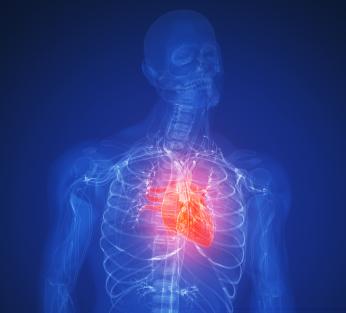Pain in the chest is a worrying symptom. It can have a simple and relatively harmless cause, such as indigestion or muscle strain, but it can also be caused by a heart attack, an alarming and potentially life-threatening condition. It is therefore extremely important to find out quickly and precisely what is causing any chest pain but it can often be difficult for doctors to reach a diagnosis based simply on the symptoms and medical history. A new laboratory test called Troponin greatly assists with this task.
I've got chest pains - am I having a heart attack?
Heart attack diagnosis
Pain in the chest is a very worrying symptom. It can have a very simple and relatively harmless cause, such as indigestion or muscle strain, but it can also be caused by a heart attack, an alarming and potentially life-threatening condition. It is therefore extremely important to find out quickly and precisely what is causing chest pain but it can often be difficult for doctors to reach a diagnosis based simply on the symptoms and medical history. There is however now a laboratory test that greatly assists with this task.

The test measures the level of Troponin in the bloodstream. Troponin is a protein that is involved in the contraction of skeletal and cardiac muscle and it is released into the blood when heart muscle cells have been damaged. It is therefore possible to measure the levels of troponin in the blood to discover if someone suffering from chest pain has had a heart attack. In a healthy person the levels of troponin in the blood are normally either zero or undetectable. The latest laboratory tests are very sensitive and are capable of detecting minute levels of troponin in the blood, and because the presence of troponin is only associated with cardiac muscle damage it is a specific marker for heart disease.
Severe chest pain can also be caused by angina. This occurs when there is an insufficient supply of blood, and hence oxygen, getting to the heart. The most common form of angina is caused by narrowing of the coronary arteries, which are the arteries that carry blood to the heart. This narrowing is usually due to the arteries becoming clogged with fatty deposits called plaques. The blood supply is often sufficient when a person is resting but during activity, such as walking briskly or climbing the stairs, the heart has to work much harder and therefore requires more oxygen, which it does not get and this results in pain. The chest pain caused by angina does not last long and usually eases once the activity stops. This condition is usually referred to as stable angina.
In a heart attack, a blood clot stops the normal flow of blood to the heart and therefore prevents the heart from receiving any oxygen. Without oxygen the heart muscle cells begin to die and as they do so they release their contents, which include troponin, into the blood.
When is a Troponin test performed?
A Troponin test is usually carried out when a patient suffering chest pain is admitted to hospital and a heart attack is a possible cause. However, not all hospitals have the same testing regime. Some may measure troponin levels when a patient is admitted and may repeat the test six and twelve hours later. Others may only measure once to simply rule out a heart attack. Sometimes other tests will be carried out together with the Troponin test.
In patients with angina a troponin test may be requested if the chest pain gets worse, if it appears when the patient is resting, and/or if the pain does not get better following treatment. These are all signs that the angina is becoming unstable, which can increase the risk of a heart attack.
The test result
Normally, Troponin levels are so low that it is not possible to measure them. Even a small rise in the level of Troponin may indicate some damage to the heart and when a person has a large increase in Troponin concentration in the blood it is highly probable that they have suffered heart damage and usually a heart attack. When a person with chest pain and/or known stable angina has a normal troponin level then it is likely that their heart has not been damaged. Another interesting point to note is that Troponin levels can remain high for up to two weeks after a heart attack. The test is not generally affected by damage to other muscles, so muscle injections, accidents or drugs that cause damage muscle do not normally affect troponin levels.
Testing for Troponin in the blood will not however be used in isolation to either diagnose or rule out the possibility of a heart attack but will be used alongside other diagnostic methods. A full physical examination will be performed and a medical history taken. In addition, ECG and the latest heart scanning equipment such as the dual-source ultra-fast CT scanner will also be important. This is because some people who have had a heart attack will nevertheless have a normal Troponin level. It is equally possible that some people who have a raised Troponin level will have no obvious heart damage as there are some other conditions that may cause Troponin levels to increase. These are:
- short term or long term inflammation of the heart (myocarditis),
- congestive heart failure,
- severe infections,
- kidney disease,
- some chronic inflammatory conditions of muscles and skin.
In any event, a raised Troponin level in the blood gives cause for concern and indicates that further tests and investigations need to be carried out.
See Heart Specialist doctors at Consultant-Search













